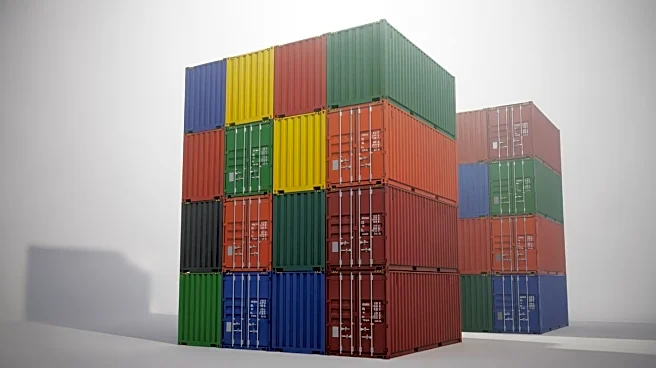What's Happening?
The National Retail Federation (NRF) has released a report projecting a decline in container import volumes through major U.S. ports, with expectations that volumes will fall below two million TEU per
month and continue to decrease through the first quarter of 2026. This forecast comes amid ongoing tariff uncertainties, although most holiday merchandise is already in stores or warehouses. The NRF anticipates a typical end-of-year slowdown in import cargo volume for November and December, but notes that recent reductions in tariffs may lead to a slight increase from earlier forecasts. The NRF's Global Port Tracker indicates that September 2025 was the last month with container import volumes above two million TEU, with projections showing a decrease to 1.85 million TEU in November and 1.75 million TEU in December. The report highlights that the year-over-year declines are partly due to elevated imports in late 2024 caused by concerns over port strikes and tariff-driven front-loading.
Why It's Important?
The decline in container imports has significant implications for U.S. retailers and the broader economy. Retailers have been front-loading imports to mitigate tariff uncertainties, which has affected inventory levels and supply chain dynamics. The NRF's forecast suggests that retail imports will finish 2025 down more than two percent compared to 2024, impacting the retail sector's growth and potentially influencing consumer prices. The ongoing tariff policy under President Trump has created challenges for long-term planning among importers and ocean carriers, leading to market forecasting uncertainties. This situation could affect consumer sentiment and spending, particularly during the holiday season, which is crucial for retail sales.
What's Next?
The NRF expects the decline in import volumes to continue into 2026, with January forecasted at 1.98 million TEU, down 11.1 percent year-over-year, February at 1.85 million TEU, down 9 percent, and March at 1.79 million TEU, down 16.7 percent. Retailers and importers will need to adapt to these changing dynamics, potentially adjusting their inventory strategies and supply chain operations. The ongoing tariff uncertainties may lead to further shifts in import patterns and consumer behavior, with potential impacts on pricing and availability of goods.











